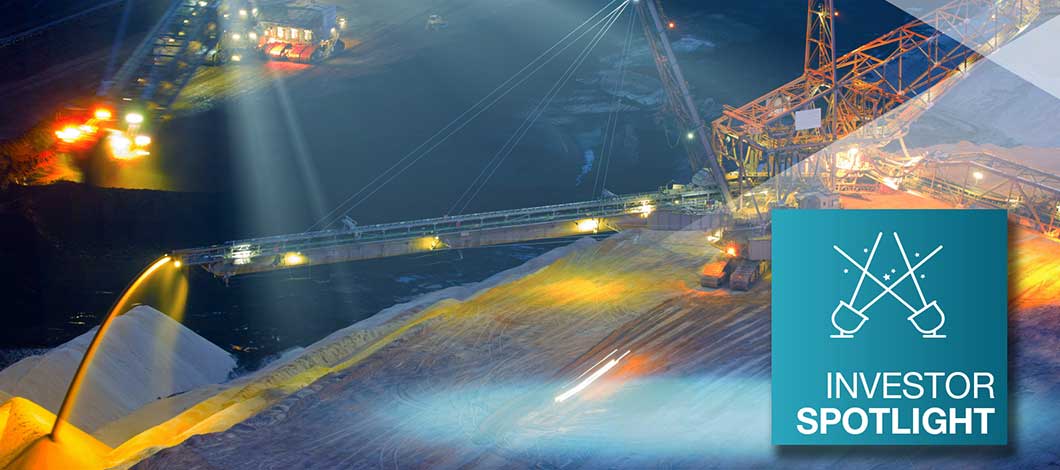 James LeLievre
James LeLievre Director, Treasury
“It has become tougher to find returns than it used to be,” explains James LeLievre, treasury director at the Canadian-headquartered mining firm. Bolstered by a strong funding position, the team is opting for a conservative approach – not just in real estate and infrastructure but also across equities and fixed income.
Today, their real asset investment strategy is characterised by international diversification, cautious due diligence that weeds out “asset-gatherers,” and a focus on the substance of strategies rather than their labels.
Le Lievre and his colleague Sahar Sharafzadeh, Senior Analyst, recently sat down with bfinance Investor Spotlight to discuss recent developments and current market conditions.
Q: Tell us a little about your Real Assets portfolio – its history, recent developments.
Sahar: We’ve been investing in Real Estate since the 1970s and in infrastructure since 2006. Although recent years haven’t seen significant increases in our allocation to real assets, we’ve broadened our portfolio across geographies and across the risk spectrum. The majority of the portfolio is still core real estate and core infrastructure, but we have some opportunistic real estate and value-add infrastructure – the opportunistic real estate is relatively new.
James: Over time it has become tougher to find returns than it used to be. The space has become more competitive and return expectations have decreased. One thing that helps us is that we don’t need to demand the same returns that we were getting a few years ago given the funded status in our pension plans which has allowed us to de-risk our portfolio.
Q: Q: How has this climate affected the way in which you approach manager selection for real assets?
Sahar: It has become even more important to do very thorough due diligence in order to understand what the manager is really doing. We want to make sure we’re not investing in ‘asset gatherers’ that are essentially prioritizing raising as much money as possible. We also want to make sure that we’re investing in true infrastructure.
James: There’s certainly been a broadening of the infrastructure asset class, raising questions on whether strategies are really “infrastructure” or not. This isn’t only an infrastructure problem: there’s been a convergence with many different asset classes going on for a while.
Sahar: The way I like to characterize infrastructure is to focus on the way cashflows come in. Sometimes you have assets where revenue is linked to GDP – volume-linked type assets like toll roads. Sometimes you have long-term contracted revenues, such as long-term PPA, which is quite traditional infrastructure.
Q: You mentioned that you’d been taking risk off the table at the overall portfolio level, reducing return expectations. How has that played out?
James: There was a moment ten years ago, after the financial crisis, when there were a lot of questions about whether pensions, especially defined benefit pensions, were fundamentally going to work. Today a lot of plans around the world, including ours, have quite a healthy funded status. We want to put our dollars to work in a good risk/reward dynamic, and if that means lower returns than before due to the current market environment then that’s fine. This is not just about real assets, of course. In equities we’ve moved towards lower volatility strategies and with managers that have been able to demonstrate downside protection. In global fixed income we’ve become more duration-aware.
Q: To what extent have you moved towards a more globally diversified portfolio in real assets?
Sahar: We are certainly more internationally diversified than we used to be. We started investing in European infrastructure in 2006, and real estate more recently. We also now have exposure to Asia Pacific real estate.
James: Pension plans in Canada and elsewhere have a strong tendency to invest in their own backyards. Over the last few years we have reduced our home country bias in real estate, public equities, and fixed income and reduced our risk exposure through geographic diversification. There has been comfort with these shifts for us as a firm: we do business globally and have a global mindset. Global diversification does introduce some new difficulties, such as FX risk. And international investment in real assets also brings some challenges that we don’t encounter in public equities or bonds such as tax leakage.
As investors in real assets continue to grapple with issues of international diversification, style drift and falling returns, Teck’s experience provides a useful perspective. For those that have the ability to prioritise controlling risk ahead of chasing returns, now is surely the time to do so.
Disclaimer: bfinance is a provider of advisory services to Teck Resources Limited.
Important Notices
This commentary is for institutional investors classified as Professional Clients as per FCA handbook rules COBS 3.5R. It does not constitute investment research, a financial promotion or a recommendation of any instrument, strategy or provider. The accuracy of information obtained from third parties has not been independently verified. Opinions not guarantees: the findings and opinions expressed herein are the intellectual property of bfinance and are subject to change; they are not intended to convey any guarantees as to the future performance of the investment products, asset classes, or capital markets discussed. The value of investments can go down as well as up.


 English (Global)
English (Global)  Français (France)
Français (France)  Deutsch (DACH)
Deutsch (DACH)  Italiano (Italia)
Italiano (Italia)  Dutch (Nederlands)
Dutch (Nederlands)  English (United States)
English (United States)  French (Canada)
French (Canada) 

